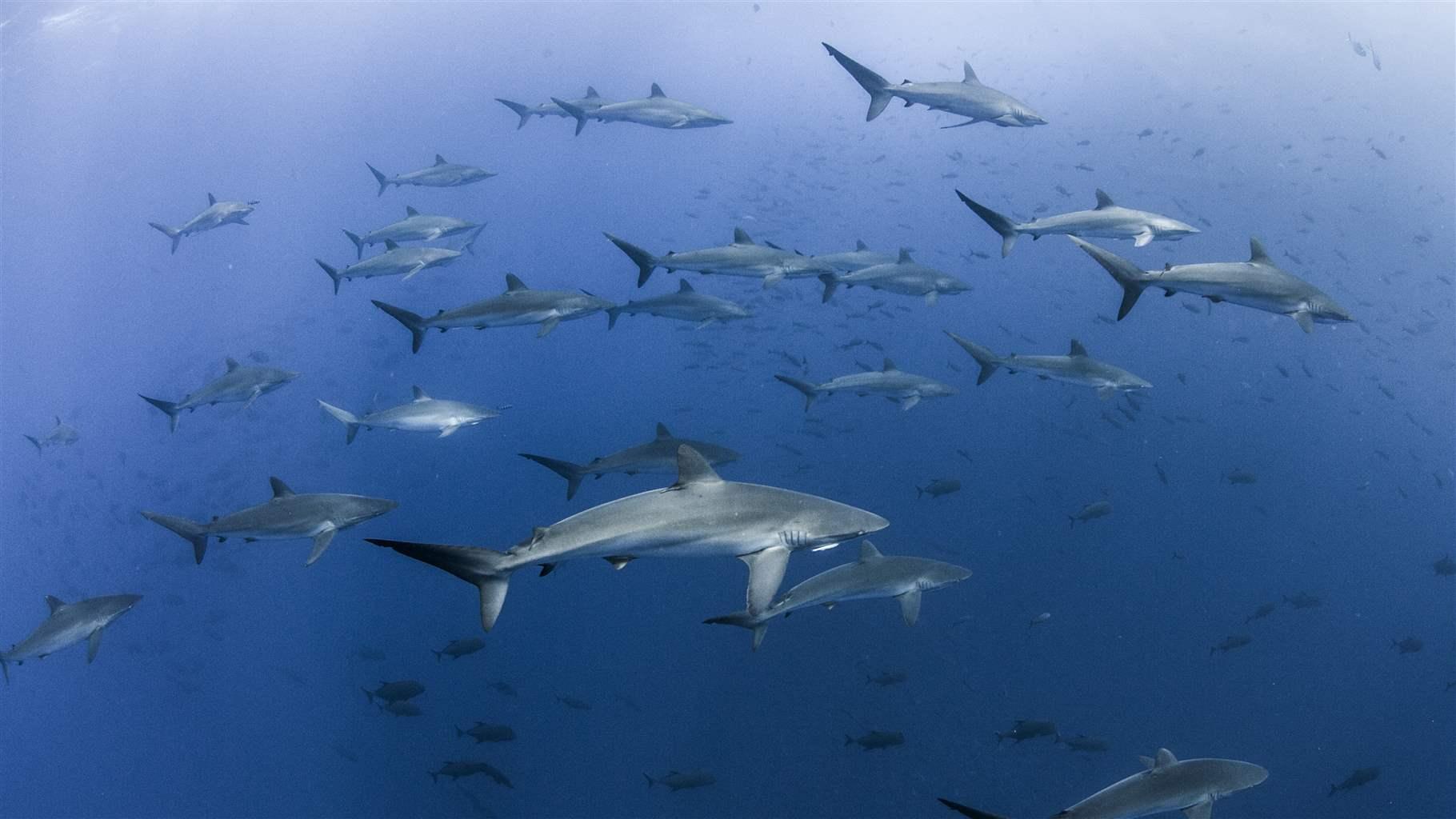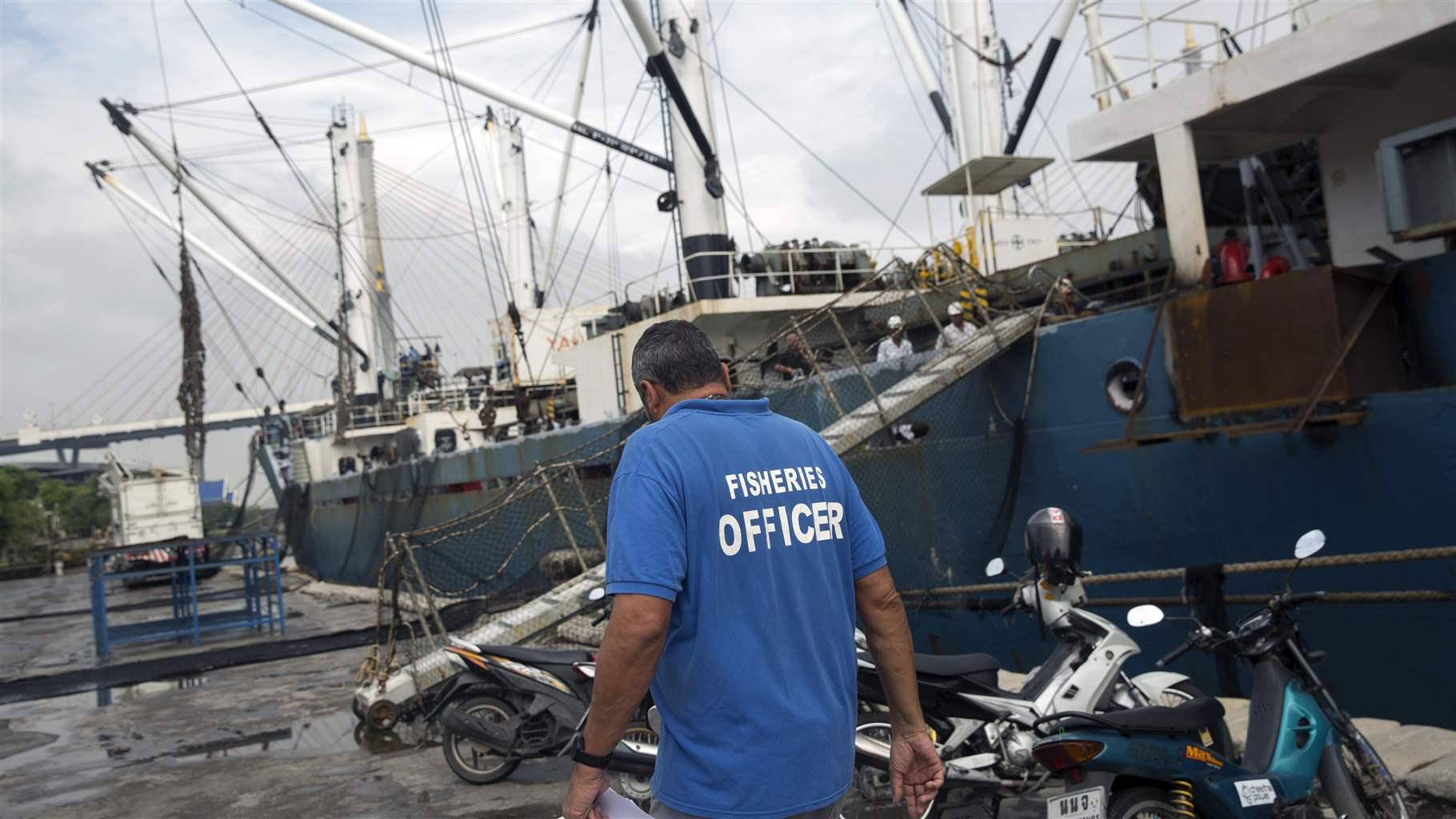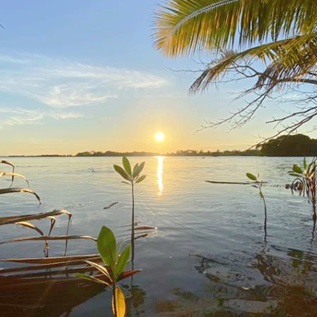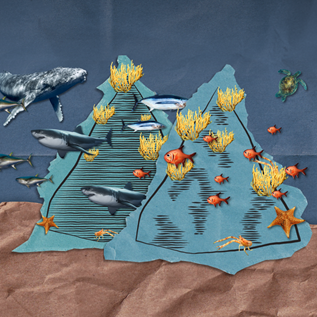International Fisheries Managers’ Response to Performance Reviews Insufficient
Member governments not taking enough recommended steps to improve sustainability
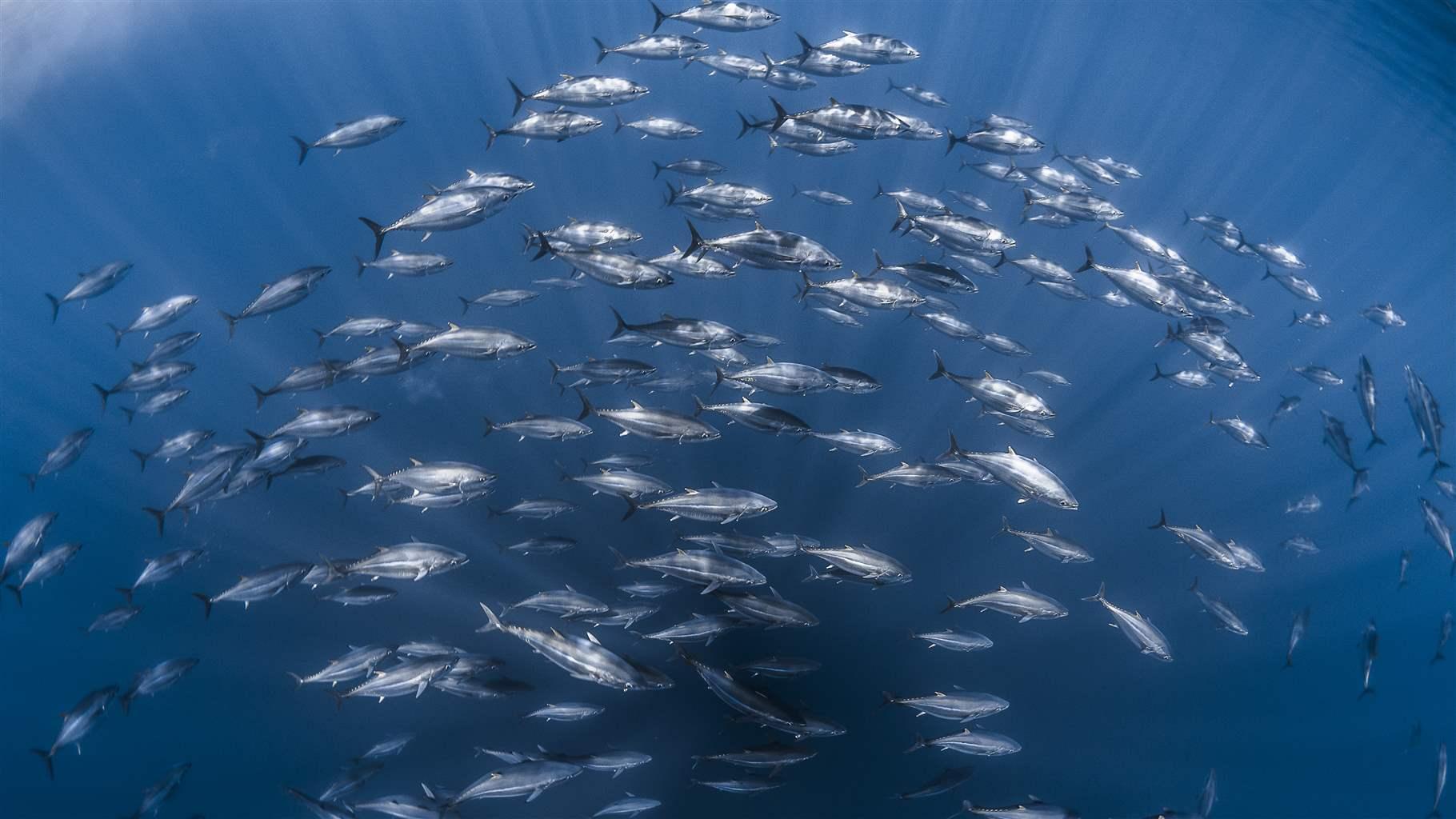
Overview
The parties to the United Nations Fish Stocks Agreement (UNFSA) abide by an important principle: They will follow the agreement’s legal obligations to “ensure the long-term conservation and sustainable use of straddling fish stocks and highly migratory fish stocks.” The major tuna regional fisheries management organizations (RFMOs) provide a mechanism for these governments to work together to manage important global fisheries and further the goals of UNFSA.
Combined, these bodies manage pelagic species, including tunas, marlins, and sharks, in 90 percent of ocean waters. Collectively, RFMO members have agreed to cooperate—through their respective agreements—on precautionary, science-based fisheries management within their Convention Areas to ensure fish stock sustainability and ecosystem health. Still, many valuable stocks are experiencing overfishing or are depleted.
In 2006, 2010, and 2016, the parties to UNFSA reviewed the agreement’s implementation to strengthen cooperation and management. Each time, they urged the RFMOs to conduct regular independent performance reviews to evaluate their work, suggest improvements, and identify best practices.1 All of the major tuna RFMOs followed suit. The Pew Charitable Trusts has long supported the review process because its independent nature provides a vital contribution to the regular business of each RFMO. Pew has examined the recommendations included in the independent performance reviews of the International Commission for the Conservation of Atlantic Tunas (ICCAT), the Inter-American Tropical Tuna Commission (IATTC), and the Western and Central Pacific Fisheries Commission (WCPFC). Then these recommendations have been compared to subsequent RFMO actions to design and adopt harvest strategies and implement science-based stock management and compliance measures, as well as to end and prevent illegal, unreported, and unregulated (IUU) fishing.
The results are difficult to quantify, but across all three RFMOs, not enough recommendations have been implemented, particularly to end and prevent overfishing and to rebuild depleted stocks. Progress has been slow toward implementing comprehensive harvest strategies, which use science-based models to set pre-agreed fishing limits that automatically change based on the health of fish populations. Parties to the RFMOs have been unable to reach consensus across other key areas as well.
ICCAT, IATTC, and WCPFC must do a better job of implementing performance review recommendations to meet the terms of the U.N. agreement and to promote sustainable fisheries management in their areas of jurisdiction.
ICCAT
ICCAT’s first performance review in 2008 was heavily critical, particularly of the way the RFMO managed eastern Atlantic and Mediterranean bluefin tuna.2 Management of this stock has improved, perhaps as a result of that review, along with a major push to implement an international trade ban on Atlantic bluefin. Recent trends indicate that the population is recovering. ICCAT deserves credit for implementing some of the review panel’s recommendations, which have contributed to these improvements.
Management of other important stocks, however, has not followed a similar pattern. Despite calls in the 2008 and 20163 performance reviews to better manage Mediterranean swordfish, the new management measure adopted in 20164 did not follow the recommendations in either review. This outcome represents a significant setback to the recovery for this stock: 100 percent of ICCAT’s own scientific models conclude that Mediterranean swordfish is overfished and that overfishing continues to occur, and the analyses show that the recovery plan adopted in 2016 has zero percent chance of success by 2025.5
Similarly, insufficient action has been taken on tropical tuna species, despite calls in the 2016 review for ICCAT to solve problems associated with those stocks, including juvenile mortality associated with fish aggregating devices. That review highlighted the importance of adopting management plans with high probabilities of success and shorter timelines than had previously been adopted by ICCAT managers.
In the three annual ICCAT meetings since that review, the Commission has been unable to adopt an Atlantic bigeye management plan in line with this recommendation, and the stock continues to decline: 99.5 percent of the most recent scientific models conclude that bigeye is overfished and that overfishing continues to occur. The stock is now 60 times more likely to collapse than to recover by 2033.6 The review also recommended that the total allowable catch (TAC) for Atlantic yellowfin be subject to an allocation scheme to prevent the TAC from being breached and to provide an incentive for member Parties managing their fishing fleets. ICCAT, however, has not even considered such an allocation scheme, and the TAC has been breached by as much as 41,000 tonnes in recent years.7 Scientists agree that this has almost certainly been detrimental for the yellowfin stock.
The ICCAT performance reviews also called for better management of the billfishes (blue and white marlin, and sailfish), but implementation of this recommendation has been mixed. Sailfish management is now more closely aligned to the scientific advice, but management of both marlins must improve.
On the other hand, ICCAT has adopted the recommendations of the performance review panels when it comes to data collection for the billfishes and sharks. At the 2018 Commission meeting, the compliance committee considered new, simplified data collection forms for these species. The Commission adopted this new format to improve the information that managers and scientists have about these vulnerable stocks.8
The 2016 review made eight recommendations to facilitate a move from setting ad hoc annual catch limits to a harvest strategies approach. This priority for the panel should also be a priority at ICCAT and all RFMOs. ICCAT has made progress on some of these recommendations, such as adopting a harvest control rule for North Atlantic albacore and setting a timeline to develop rules for other stocks. However, recent decisions to delay the timeline for priority stocks and limited funding have prevented further gains. These developments, combined with an inability to make the difficult but necessary annual decisions on tropical tunas and billfishes, are bad for ICCAT fisheries.
ICCAT’s response to operational recommendations by the review panels has been mixed, but more complete than the response to stock management recommendations. In addition to the new billfish and shark forms, ICCAT strengthened its port state measures9 and improved its vessel monitoring systems to require that locations be reported more frequently.10 On the other hand, observer coverage continues to be lower than warranted for longline fleets, despite findings from the reviewers that increased coverage is required to better understand the impact of ICCAT fisheries on bycatch species.
ICCAT should more closely follow the numerous recommendations of the panels on continuing issues regarding compliance with Commission rules. In addition, examples of persistent non-compliance require more responsive action from ICCAT. The compliance committee needs to dedicate more time to reviewing Parties’ compliance or non-compliance with operational requirements, such as observer coverage, use of fish aggregating devices, and other non-quota issues.
IATTC
IATTC was the last tuna RFMO to conduct an independent review, completing its first review in 2016, eight years after ICCAT’s initial review.11 While most recommendations were weighted toward procedural improvements, others focused on changes that would boost the conservation and management of the species under IATTC jurisdiction.
However, in the three years since the recommendations were delivered, little action has been taken. For example, recommendations for procedural changes, such as easing the requirement for consensus to allow some voting and establishing a fisheries management committee to advise the scientific advisory committee (SAC) and the Commission, have not been addressed. Both of these recommendations could help address the declining bigeye tuna stock.12 While IATTC adopted a basic harvest control rule to protect bigeye in 2014, managers refused to apply the rule when it should have been triggered by a stock assessment in 2018. Instead, they began a review of the scientific models, delaying any potential fishing reductions for at least two years.
IATTC also did not act on a recommendation to balance the leadership of the SAC by adding a co-chair to work alongside the Secretariat’s executive director, who currently leads the committee. In addition, a recommendation to adjust schedules for the SAC and the compliance committee to allow for sufficient time for the decisions and recommendations of both to be analyzed and ready for action by the full Commission has not been consistently implemented. These simple timing changes would significantly improve the Commission’s ability to fulfill its mission.
On the management side, the review included clear recommendations to help bolster fish stocks. IATTC has had a robust observer program for large purse seine vessels for several years, but the analysis recommended increasing coverage of small purse seine vessels as well. In addition, the review recommended that the longline observer coverage requirement be increased from the current 5 percent of fishing activity to a level that allows observers to see the impact of tuna fishing on rare species. To date, only one nation has met even the 5 percent requirement.13
Neither of these recommendations has been implemented. Proposals were introduced at the 2018 Commission meeting to increase longline observer coverage but none achieved the necessary support. While the review recommended augmentation of the observer program, electronic monitoring should be considered as a complementary tool to human observer coverage. The IATTC outsources observer coverage for transshipment, but the contract does not require observation of transfers within the WCPFC Convention Area, even if they include IATTC-managed stocks.14 That loophole can result in significant data gaps.
The review panel recommended that IATTC develop management proposals for the main shark species (e.g., blue sharks, silky sharks, etc.), but the Commission has not yet acted on this.
Finally, although the Commission did endorse a recovery plan for Pacific bluefin tuna consistent with the review’s recommendations,15 IATTC will need to focus on making sure that the plan is implemented successfully and that there is full compliance by all Parties. In general, strengthening IATTC’s compliance regime so there is greater accountability for flag States and greater consequences for persistent non-compliance would bolster the conservation and management of all stocks under the Commission’s jurisdiction.
WCPFC
Members of the WCPFC agreed to undertake a performance review in 2008, four years after the RFMO’s Convention entered into force. The work was postponed for several years because of budget constraints, but the review was completed and presented to the Commission at its annual meeting in 2012.16
On harvest strategies and conservation matters, WCPFC has made progress implementing recommendations to improve the collection and timeliness of data and to develop a regional observer program. Still, some recommendations have not been addressed or require further implementation. For instance, the review lauded the WCPFC for its commitment to develop limit and target reference points and associated harvest control rules to maintain stocks at healthy states. The panel encouraged that work to continue.
Since then, the WCPFC has adopted a definition for a limit reference point for tuna species and expanded its work on the harvest strategy approach for tuna species or fisheries. To do that, it has adopted a Conservation and Management Measure (CMM)17 and an annual workplan.18 Although progress is being made, much work remains. Members should cooperate and collaborate to ensure that completion of the workplan is a priority.
With respect to individual species management, the WCPFC record is mixed. The RFMO adopted a rebuilding plan for Pacific bluefin tuna in 2018, following several years of stalemate over how to arrest the decline of the stock.19 But it has not adopted limits on mortality of southwest Pacific striped marlin, nor revised its north Pacific striped marlin measure, as recommended by the review.
On compliance, the review recommended WCPFC fully implement its compliance monitoring scheme (CMS). Since the review, the Commission has updated its CMS several times, most recently by adopting a new scheme in 2018.20 The CMS now includes provisions to ensure members are accountable for responding to alleged infractions by their vessels and a mechanism to identify capacity constraints that can hinder compliance in developing States. Still, the WCPFC has not revised its CMS in accordance with the review’s suggestion to develop a range of penalties for non-compliance, or to explore market-related mechanisms, possibly including prohibitions on trade, to address unsustainable fishing. It also has avoided codifying the CMS into a permanent CMM, as opposed to extending it on a year-to-year basis.
On efforts to fight IUU fishing, the WCPFC has made progress by adopting a CMM on port state measures and requiring the use of unique vessel identification numbers. The latter includes a requirement that smaller vessels fishing outside their exclusive economic zones have International Maritime Organization numbers, as recommended by the review. On the other hand, WCPFC just started a recommended examination of whether its transshipment verification and regulation procedures are adequate or need improvement. Similarly, a working group continues development of a catch documentation scheme (CDS), despite a recommendation in the 2012 review to start developing a CDS for species of greater concern.
Conclusion
ICCAT, IATTC, and WCPFC have all made progress in some areas of fisheries management, but still need to do more. Independent performance reviews provide key insights into ways that governments can fulfil the terms of UNFSA and their obligations to the RFMOs. Formal responses to the recommendations, including annual audits on progress toward implementation, should be codified into the normal business of the RFMOs.
To encourage this, Pew urges parties to UNFSA to urgently take performance review recommendations into account when determining management measures. They can be used as a basis for moving toward sustainability. To successfully follow those recommendations, Parties should support more complete compliance mechanisms at every RFMO that include consequences for non-compliance, a consistent recommendation of performance review panels around the world.
Fishing nations should also support a shift from year-to-year management of individual fish stocks to holistic harvest strategies, where science-based management actions are automatically triggered based on stock status. Should the UNFSA Parties succeed in these efforts, the RFMOs can expect their next independent performance reviews to highlight more areas where past recommendations have been met.
Endnotes
- United Nations, “Review Conference on the Agreement for the Implementation of the Provisions of the United Nations Convention on the Law of the Sea of 10 December 1982 Relating to the Conservation and Management of Straddling Fish Stocks and Highly Migratory Fish Stocks,” 22-26 May 2006, Report of the Review Conference, U.N. Doc. A/CONF.210/2006/15 (July 3, 2006), https://undocs.org/A/CONF.210/2006/15; United Nations, “Resumed Review Conference on the Agreement ... Relating to the Conservation and Management of Straddling Fish Stocks and Highly Migratory Fish Stocks,” 24-28 May 2010, Report of the Resumed Review Conference, A/CONF.210/2010/7 (27 July 2010), https://undocs.org/A/CONF.210/2010/7; United Nations, “Resumed Review Conference on the Agreement ... Relating to the Conservation and Management of Straddling Fish Stocks and Highly Migratory Fish Stocks,” 23-27 May 2016, Report of the Resumed Review Conference, A/CONF.210/2016/5 (1 August 2016), http://undocs.org/A/CONF.210/2016/5.
- International Commission for the Conservation of Atlantic Tunas, “Report of the Independent Performance Review of ICCAT” (2009), http://www.iccat.int/Documents/Other/PERFORM_%20REV_TRI_LINGUAL.pdf.
- International Commission for the Conservation of Atlantic Tunas, “Report of the Independent Performance Review of ICCAT” (2016), https://www.iccat.int/documents/other/0-2nd_performance_review_tri.pdf.
- International Commission for the Conservation of Atlantic Tunas, “Recommendation by ICCAT Replacing the Recommendation [13-04] and Establishing a Multi-Annual Recovery Plan for Mediterranean Swordfish” (2016), https://www.iccat.int/Documents/Recs/compendiopdf-e/2016-05-e.pdf.
- International Commission for the Conservation of Atlantic Tunas, “Report of the Standing Committee on Research and Statistics” (2018), https://www.iccat.int/Documents/Meetings/Docs/2018/REPORTS/2018_SCRS_REP_ENG.pdf.
- John Walter et al., “Atlantic Bigeye Tuna Stock Assessment in Stock Synthesis,” 2018, ICCAT Doc. SCRS/2018/111.
- Ibid., 5.
- International Commission for the Conservation of Atlantic Tunas, “Recommendation by ICCAT on Improvement of Compliance Review of Conservation and Management Measures Regarding Billfish Caught in the ICCAT Convention Area” (2018), https://www.iccat.int/Documents/Recs/compendiopdf-e/2018-05-e.pdf; International Commission for the Conservation of Atlantic Tunas, “Recommendation by ICCAT to Replace Recommendation 16-13 on Improvement of Compliance Review of Conservation and Management Measures Regarding Sharks Caught in Association With ICCAT Fisheries” (2018), https://www.iccat.int/Documents/Recs/compendiopdf-e/2018-06-e.pdf.
- International Commission for the Conservation of Atlantic Tunas, “Recommendation by ICCAT on Port State Measures to Prevent, Deter, and Eliminate Illegal, Unreported, and Unregulated Fishing” (2018), https://www.iccat.int/Documents/Recs/compendiopdf-e/2018-09-e.pdf.
- International Commission for the Conservation of Atlantic Tunas, “Recommendation by ICCAT Concerning Minimum Standards for Vessel Monitoring Systems in the ICCAT Convention Area” (2018), https://www.iccat.int/Documents/Recs/compendiopdf-e/2018-10-e.pdf.
- Inter-American Tropical Tuna Commission, “Performance Review” (2016), http://www.tuna-org.org/Documents/IATTC-AIDCP-Performance-Review-Final-ReportENG.pdf.
- Inter-American Tropical Tuna Commission, “Staff Recommendations for Management and Data Collection” (2018), IATTC Doc. SAC-09-15 REV 2, https://www.iattc.org/Meetings/Meetings2018/SAC-09/PDFs/Docs/_English/SAC-09-15-EN-REV-17-May-18_Staff-recommendations-2018.pdf.
- Ibid., 11.
- MRAG Americas Inc., “Review of the IATTC Regional Observer Programme Covering the Period January 1, 2016 to Mar 1, 2017” (2017), https://www.iattc.org/Meetings/Meetings2017/IATTC-92/PDFs/OtherDocuments/_English/IATTC-92-OTR_MRAG-report-on-at-sea-transshipment-program-2016.pdf.
- Inter-American Tropical Tuna Commission, “Amendment to Resolution C-16-08 on a Long-Term Management Framework for the Conservation and Management of Pacific Bluefin Tuna in the Eastern Pacific Ocean” (2018), http://www.iattc.org/PDFFiles/Resolutions/IATTC/_English/C-18-02-Active_Bluefin%20tuna%20(long%20term).pdf.
- Western and Central Pacific Fisheries Commission, “Review of the Performance of the WCPFC” (2012), https://www.wcpfc.int/node/3050.
- Western and Central Pacific Fisheries Commission, “Conservation and Management Measure on Establishing a Harvest Strategy for Key Fisheries and Stocks in the Western and Central Pacific Ocean (CMM 2014-06)” (2014), https://www.wcpfc.int/doc/cmm-2014-06/conservation-and-management-measures-develop-and-implement-harvest-strategy-approach.
- Western and Central Pacific Fisheries Commission, “Workplan for the Adoption of Harvest Strategies – Updated and Adopted by WCPFC15” (2018), https://www.wcpfc.int/doc/supplcmm-2014-06/workplan-adoption-harvest-strategies-updated-and-adopted-wcpfc15.
- Western and Central Pacific Fisheries Commission, “Conservation and Management Measure for Pacific Bluefin Tuna (CMM 2018-02)” (2018), https://www.wcpfc.int/doc/cmm-2018-02/conservation-and-management-measure-pacific-bluefin-tuna.
- \Western and Central Pacific Fisheries Commission, “Conservation and Management Measure for Compliance Monitoring Scheme (2018-07)” (2018), https://www.wcpfc.int/doc/cmm-2018-07/conservation-and-management-measure-compliance-monitoring-scheme.
